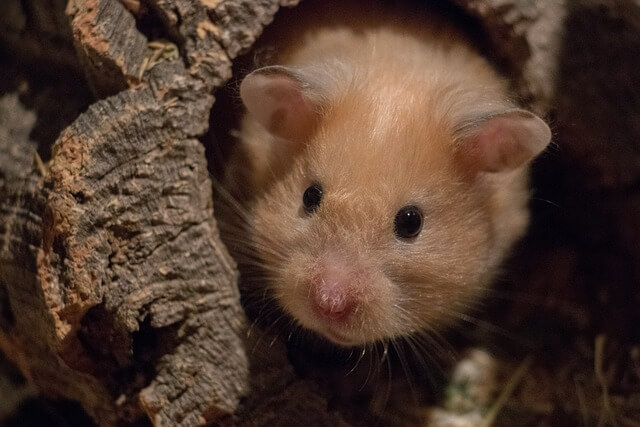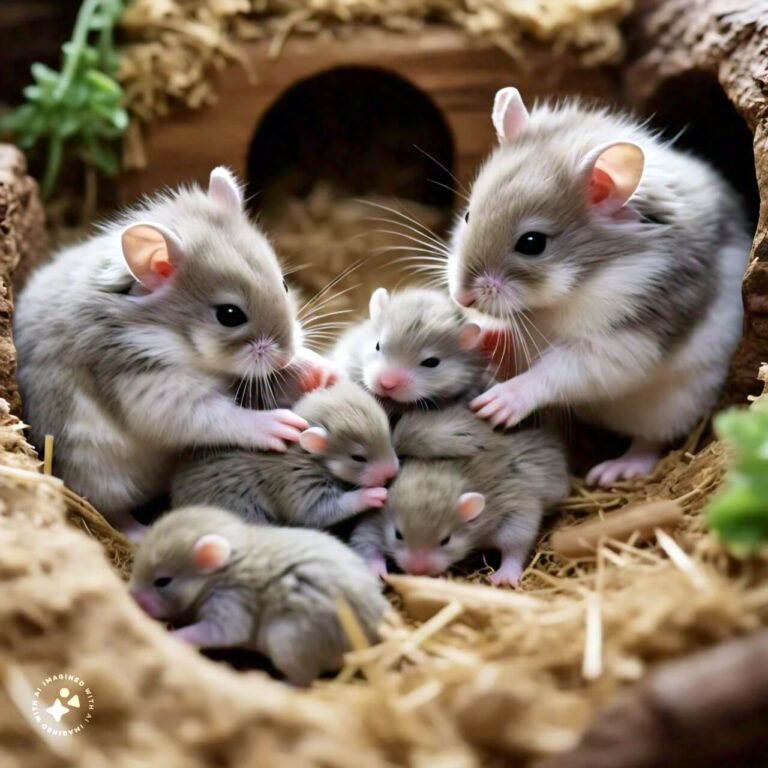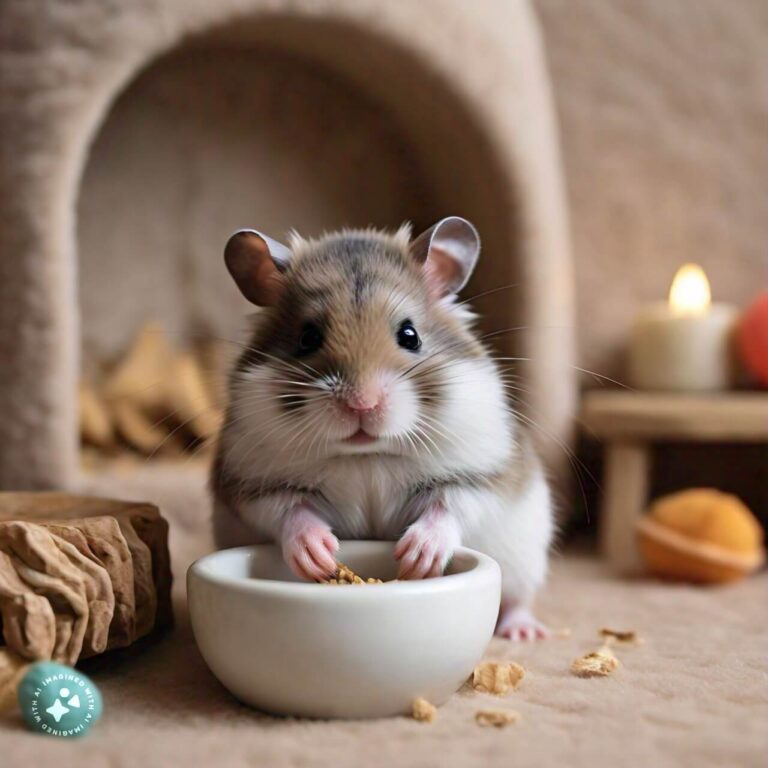Beige Syrian Hamster – Hamsters.pk
The Fascinating History and Origin of Beige Syrian Hamsters
Beige Syrian hamsters, also known as golden hamsters, have a rich history that traces back to their native habitat in the Middle East. These adorable rodents have captured the hearts of pet lovers worldwide, but their journey from the wild to our homes is a fascinating tale worth exploring.
Discovery of Syrian Hamsters in the Wild
The story of Syrian hamsters begins in 1839 when British zoologist George Robert Waterhouse first described them as a distinct species. However, it wasn’t until 1930 that researchers discovered a mother and her litter in the Syrian desert near Aleppo. This family of hamsters, captured by Israel Aharoni, a professor at the Hebrew University of Jerusalem, became the foundation for the entire captive population of Syrian hamsters we know today.
Breeding and Domestication of Syrian Hamsters
Professor Aharoni brought the hamsters back to Jerusalem, where they were bred in captivity. Some of the offspring were later sent to Britain and the United States for further breeding and study. In 1938, the first Syrian hamsters arrived in the United States, where they quickly gained popularity as pets and laboratory animals.
The Rise of Beige Syrian Hamsters
While the original wild Syrian hamsters had a golden-brown coat, selective breeding led to the development of various color morphs, including the beloved beige variety. Beige Syrian hamsters have a soft, light brown coat that gives them a gentle and cuddly appearance, contributing to their popularity among pet owners.
Syrian Hamsters in Research and Medicine
Beyond their role as cherished pets, Syrian hamsters have made significant contributions to scientific research. Their unique biological characteristics, such as their susceptibility to certain diseases like cancer and diabetes, have made them valuable models for studying human health conditions. Syrian hamsters have also been used in research related to circadian rhythms, reproductive biology, and neuroscience.
Conservation Status and Threats
Despite their widespread popularity as pets, wild Syrian hamsters face numerous threats in their native habitat. Habitat loss, hunting, and the pet trade have led to a significant decline in their population. The International Union for Conservation of Nature (IUCN) has listed the Syrian hamster as “vulnerable” on their Red List of Threatened Species, emphasizing the need for conservation efforts to protect these beloved creatures in the wild.
From their humble beginnings in the Syrian desert to their status as one of the most popular pet rodents worldwide, beige Syrian hamsters have a captivating history. As we continue to appreciate these furry companions, it’s essential to remember their wild origins and the importance of preserving their natural habitat for future generations to enjoy.
Beige Syrian Hamster Care: Essential Tips for a Happy and Healthy Pet

Beige Syrian hamsters make wonderful pets with their adorable appearance and friendly nature. However, to ensure your furry friend lives a happy and healthy life, it’s crucial to provide proper care and attention. In this article, we’ll discuss the essential tips for taking care of your beige Syrian hamster.
Provide a Spacious and Comfortable Habitat
When it comes to housing your beige Syrian hamster, size matters. These active creatures need a spacious cage with a minimum size of 24 inches by 12 inches and at least 12 inches tall. The cage should have a solid floor to prevent foot injuries and be equipped with a secure lid to prevent escapes. Include plenty of bedding for burrowing, such as paper-based or aspen wood shavings, and avoid cedar or pine shavings, which can be harmful to your pet’s health.
Offer a Balanced and Nutritious Diet
A balanced diet is essential for keeping your beige Syrian hamster healthy. Provide a high-quality commercial hamster food mix that contains a variety of grains, seeds, and dried vegetables. Supplement their diet with small amounts of fresh fruits and vegetables, such as carrots, cucumbers, and leafy greens. Avoid giving your hamster sugary or fatty treats in excess, as this can lead to obesity and health problems. Always provide access to fresh, clean water in a water bottle attached to the cage.
Encourage Exercise and Playtime
Beige Syrian hamsters are active creatures that require daily exercise and playtime to stay healthy and mentally stimulated. Provide your pet with an exercise wheel that is at least 8 inches in diameter to prevent back issues. Include other toys, such as tunnels, climbing ropes, and chew toys, to keep your hamster entertained and encourage natural behaviors. Allowing your hamster to explore a hamster-proofed room or playpen under supervision can also provide additional exercise and enrichment.
Maintain a Clean and Hygienic Environment
Keeping your beige Syrian hamster’s habitat clean is crucial for their health and well-being. Spot clean the cage daily by removing soiled bedding, uneaten food, and droppings. Perform a thorough cleaning of the entire cage, including toys and accessories, once a week using a pet-safe disinfectant. When cleaning, be sure to place your hamster in a secure, temporary enclosure to avoid any escapes or stress.
Handle with Care and Patience
Beige Syrian hamsters can be gentle and friendly pets when handled regularly and appropriately. Start by letting your hamster get used to your presence and scent before attempting to hold them. When ready, gently scoop your hamster up using both hands, supporting their body and allowing them to feel secure. Be patient and consistent with handling, as it may take some time for your hamster to become comfortable with human interaction. Never wake a sleeping hamster or grab them unexpectedly, as this can cause stress and defensive biting.
Schedule Regular Health Check-ups
To ensure your beige Syrian hamster stays in good health, schedule regular check-ups with a veterinarian experienced in treating small mammals. Keep an eye out for signs of illness, such as lethargy, diarrhea, loss of appetite, or difficulty breathing, and seek veterinary care promptly if you notice any concerns. Regularly trimming your hamster’s nails and providing them with chew toys to wear down their continuously growing teeth can also help prevent health issues.
By following these essential care tips, you can create a loving and nurturing environment for your beige Syrian hamster, ensuring they live a happy, healthy, and fulfilling life as your cherished pet.
Understanding the Unique Characteristics and Behavior of Beige Syrian Hamsters
Beige Syrian hamsters, also known as golden hamsters, are one of the most popular pet hamster varieties. These adorable rodents have distinct characteristics and behaviors that set them apart from other hamster species. In this article, we’ll explore the unique traits and habits of beige Syrian hamsters to help you better understand and appreciate your furry friend.
Physical Characteristics of Beige Syrian Hamsters
Beige Syrian hamsters are the largest of the pet hamster species, typically growing to 5-7 inches in length. They have a stout, rounded body with a short, stubby tail and small, round ears. Their fur is short, dense, and soft, with a beautiful beige color that can range from light tan to a deeper golden hue. Some beige Syrian hamsters may have white markings on their belly or paws.
Solitary Nature and Territorial Behavior
Unlike some other hamster species, beige Syrian hamsters are solitary animals and should be housed individually. They are highly territorial and will fight with other hamsters, even siblings, if kept together after reaching maturity at around 8 weeks of age. Providing a spacious habitat with plenty of hiding spots and toys can help satisfy their natural territorial instincts and keep them content.
Nocturnal Activity and Sleep Habits
Beige Syrian hamsters are nocturnal creatures, meaning they are most active during the night. In the wild, this behavior helps them avoid predators and escape the heat of the day. As pets, you may notice your hamster sleeping for much of the day and becoming more lively and playful in the evening and night hours. It’s essential to respect their natural sleep schedule and avoid disturbing them during their rest times.
Burrowing and Nesting Instincts
In their natural habitat, beige Syrian hamsters are avid burrowers and create intricate underground tunnels for shelter, food storage, and nesting. As pets, they retain this instinct and enjoy burrowing in deep, soft bedding materials. Providing your hamster with sufficient bedding depth (at least 6 inches) and nesting materials, such as shredded paper or cotton, will allow them to express this natural behavior and create a cozy sleeping area.
Food Hoarding and Cheek Pouches
Beige Syrian hamsters have large, expandable cheek pouches that they use to transport and store food. In the wild, this adaptation allows them to gather food efficiently and bring it back to their burrows for later consumption. As pets, you may notice your hamster stuffing their cheek pouches full of food and hiding it in various parts of their cage. This behavior is entirely normal and helps them feel secure in their environment.
Exploratory and Playful Nature
Beige Syrian hamsters are curious and playful animals that require mental stimulation and physical exercise to stay happy and healthy. They enjoy exploring their surroundings, running on exercise wheels, and interacting with various toys and obstacles. Providing a variety of hamster-safe toys, such as tunnels, climbing ropes, and chew toys, can help keep your pet engaged and mentally stimulated.
Taming and Socialization
While beige Syrian hamsters are solitary animals, they can still form bonds with their human caregivers through regular, gentle handling and socialization. With patience and consistency, your hamster can learn to trust you and even enjoy being held and petted. It’s crucial to approach taming and socialization gradually, always respecting your hamster’s comfort level and body language to avoid causing stress or defensive behavior.
By understanding the unique characteristics and behaviors of beige Syrian hamsters, you can create a nurturing environment that caters to their specific needs and allows them to thrive as beloved pets. Respecting their solitary nature, nocturnal habits, and natural instincts will help you build a strong, trusting relationship with your furry companion.
Beige Syrian Hamsters as Pets: Pros, Cons, and What to Expect
If you’re considering bringing a beige Syrian hamster into your home as a pet, it’s essential to weigh the pros and cons and have a clear understanding of what to expect. In this article, we’ll explore the advantages and disadvantages of owning a beige Syrian hamster and provide insights into the responsibilities and joys of caring for these adorable rodents.
Pros of Owning a Beige Syrian Hamster
- Adorable and Engaging: Beige Syrian hamsters are undeniably cute, with their fluffy coats, round cheeks, and endearing personalities. Watching them play, explore, and go about their daily activities can provide endless entertainment and joy.
- Low Maintenance: Compared to larger pets, beige Syrian hamsters have relatively low maintenance requirements. They don’t need daily walks, extensive grooming, or large living spaces, making them suitable for individuals with limited time or space.
- Quiet and Apartment-Friendly: Unlike some other pets, hamsters are generally quiet and don’t create noise disturbances. This makes them ideal for apartment living or households where loud pets may not be suitable.
- Relatively Low Cost: The initial setup costs for a beige Syrian hamster, including their cage, bedding, food, and accessories, are generally lower compared to those of larger pets. Ongoing expenses, such as food and bedding, are also reasonable.
- Educational Opportunity: Caring for a pet hamster can be an educational experience, especially for children. It teaches responsibility, empathy, and the importance of providing proper care for a living creature.
Cons of Owning a Beige Syrian Hamster
- Nocturnal Nature: Beige Syrian hamsters are most active during the night, which may not align with your daily schedule. If you’re looking for a pet that’s active during the day, a hamster may not be the best choice.
- Short Lifespan: Compared to some other pets, beige Syrian hamsters have a relatively short lifespan of 2-3 years on average. This means that you may have to face the emotional challenges of losing your pet sooner than expected.
- Solitary Lifestyle: Unlike guinea pigs or rabbits, beige Syrian hamsters are solitary animals and should be housed alone. If you’re looking for a pet that enjoys the company of others, a hamster may not be the right fit.
- Potential for Biting: If frightened, startled, or improperly handled, beige Syrian hamsters may bite. This can be particularly concerning for young children who may not understand how to handle a hamster gently and respectfully.
- Sensitive to Environmental Changes: Hamsters are sensitive to changes in their environment, such as extreme temperatures, drafts, or loud noises. They require a stable, comfortable habitat to thrive.
What to Expect as a Beige Syrian Hamster Owner
- Daily Care Routine: As a hamster owner, you’ll need to provide fresh food and water daily, spot-clean the cage, and ensure your pet has a clean, comfortable living space.
- Regular Interaction: While hamsters are solitary, they still benefit from regular, gentle handling and interaction with their owners. This helps them stay tame and allows you to bond with your pet.
- Health Monitoring: You’ll need to monitor your hamster’s health regularly, looking out for signs of illness or distress. Regular veterinary check-ups are recommended.
- Playtime and Enrichment: Providing your hamster with a variety of toys, an exercise wheel, and opportunities for supervised playtime outside the cage is essential for their physical and mental well-being.
- Responsibility and Commitment: Owning a beige Syrian hamster is a commitment that requires responsibility, patience, and dedication. You must be prepared to provide proper care and attention for the duration of your pet’s life.
By carefully considering the pros, cons, and expectations of owning a beige Syrian hamster, you can make an informed decision about whether this adorable rodent is the right pet for you. If you’re prepared to provide a loving, nurturing home and meet their specific needs, a beige Syrian hamster can make a wonderful, rewarding companion.












